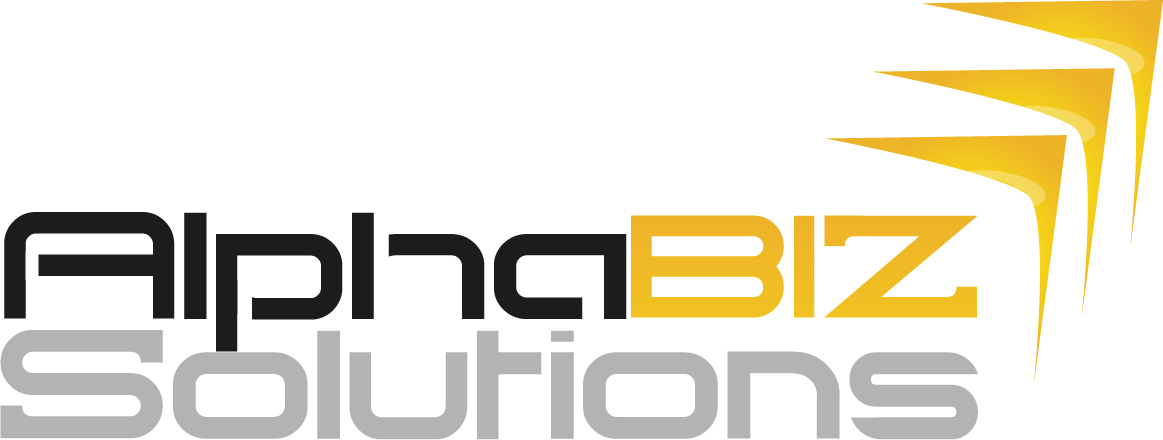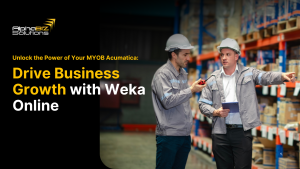Running a successful business often means keeping a close eye on your expenses. If you’re selling physical products, one of your key considerations will be inventory costs.
In this guide, we will explain a few key pointers about inventory costs and provide practical tips on how to keep them in check. Also, we will discuss how leveraging an insight-driven inventory management solution like MYOB Advanced Enterprise can simplify your inventory planning, saving you both time and money.
Getting to Know the Concept of Inventory Costs
At its core, inventory cost is the total amount you spend on ordering and storing your stock. It also includes the effort needed to keep track of your stock records. Understanding these costs helps you improve profitability, keep stock levels under control and boost customer service.
Inventory costs come in several forms. Each plays a unique role in the success of your business. Identifying these costs can help you spot areas to mitigate cost leakages within an all-encompassing Business Management Solution.,
Firstly, let’s identify what these costs are.
We are not going to list the typical running cost of a warehouse or distribution type business like warehouse space, rental equipment, insurance, and so on, we will mainly focus on cost associated with the management and logistics of inventory so we can demonstrate how a Business Management Solution like MYOB Advanced handles these challenges.
Labour Costs
Labour plays a significant part in the associated cost, as time is money and requires someone or a team within administration and the warehouse to manage the inventory operation. The effectiveness and efficiency of this management are gauged by the extent of automation incorporated into repetitive tasks.
This allows the team to prioritise tasks that add more value, such as maintaining close relationships with suppliers and customers, as well as providing in-depth analysis of supplier interactions, customer behavior, and inventory activities.
Holding/Carrying Costs
These costs are associated with storing inventory before it’s sold. Things like consignment stock taking up storage space, interest on loans used to purchase inventory, and losses due to expired, obsolete, overstocking, and spoilage to name a few.
Landed Cost
Landed or Add-on cost is working out the associated expenses until the goods are ready for sale or use. Typical cost is freight & shipping, package & handling, custom & import fees, inspections, etc. Calculating landed cost is crucial for working out the true cost of the item to properly analyse the overall cost and pricing decisions and not simply mark up by the purchase price.
How do you reduce potential cost leakages and increase productivity and profit.
In this section, we’ll provide the strategies you can do to reduce cost leakages, particularly with costs that have been mentioned above which are Labour, Handling/Carrying, and Landed Costs.
1. Centralisation of Product Information
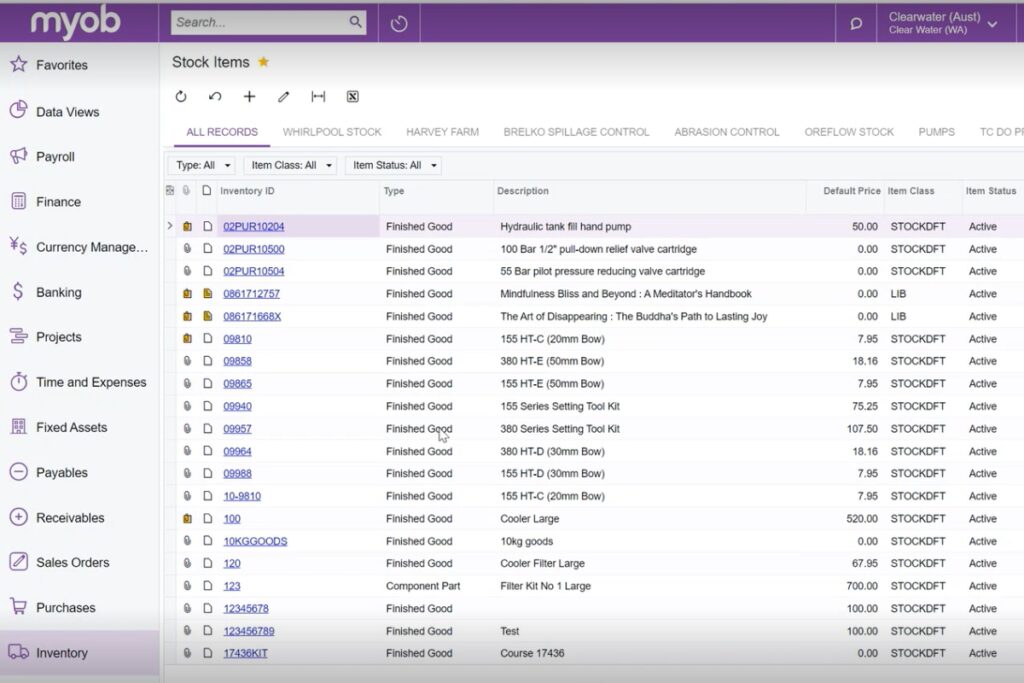
One way of reducing labour costs is by having an automated centralised system that can store comprehensive information about your products. This reduces the time spent on collecting data manually or on spreadsheets, as you can access all the information you need instantly.
One of the prime features of MYOB Advanced is its ability to store detailed information about your inventory. To name a few here are some strong features of maintaining stock information:
Ability to Attach Specific Information about the Product

It enables you to associate detailed information with each product like specification sheets and images. This systematically organises the information in a central location and is easily accessible.
Ability to Have Precise Unit of Measure Calculations

Precise measurements are vital for accurate inventory control, and this system offers that precision by itemising any purchase or sale unit of measure calculation for accurate stock levels to avoid staff from manually having to work out the division or multiplier when purchasing or selling goods.
Ability to Store Information about Different Suppliers

By keeping a record of supplier details linked to products, the system makes sourcing and reordering easier and faster. This data can be instrumental when comparing suppliers or negotiating terms.
2. Setting Stock Replenishment Rules

Being able to set replenishment rules can also reduce labour costs as it reduces the time spent ensuring there is always sufficient stock. This eliminates the laborious and time consuming effort of running back and forth only to check stock availability.
The MYOB Advanced system allows you to set min and max levels for each item and each warehouse if required. When stock levels reach these predetermined levels, the system can automatically determine the optimal quantity to reorder based on:
- The total number of orders in the system
- The number of outstanding orders from suppliers
- The current stock levels
- Supplier lead time
- And other advanced parameters and seasonality’s if required.
This feature aids in maintaining optimal stock levels and preventing stockouts or overstocking. We’ve also written a blog sharing 6 essential tips to manage and track stock replenishment. You can check the blog here:
Essential Stock Replenishment Tips for Your Business
3. Digitalised and Real-Time Purchases and Sales Cycles
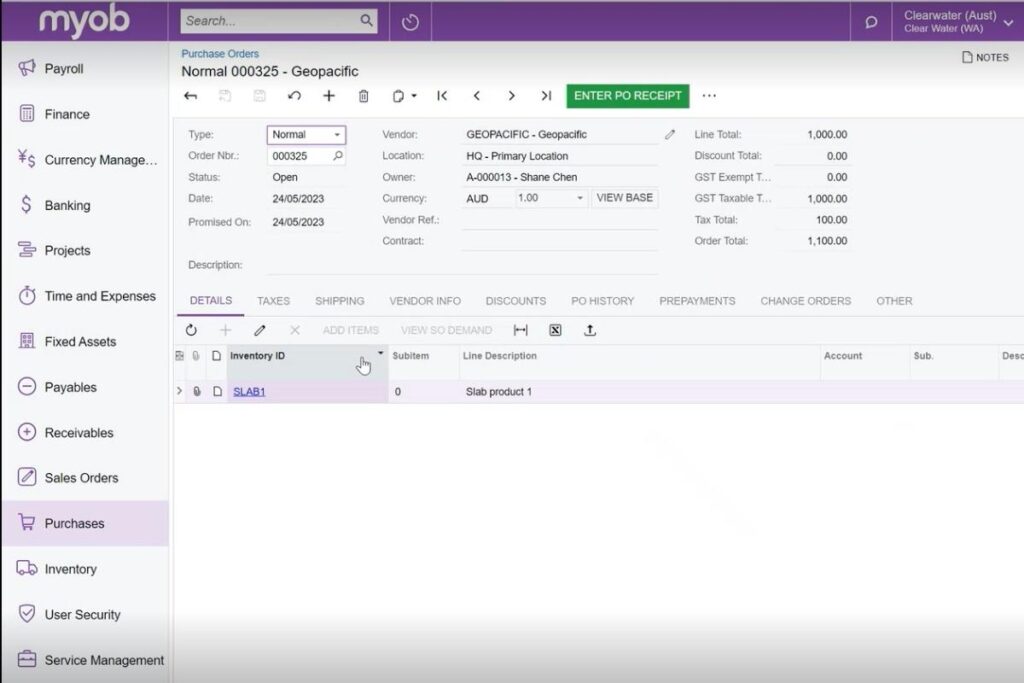
Another way to reduce labour costs is to eliminate the manual process of having staff check the status of purchases and sales cycles through an online system. MYOB Advanced is a fully online and mobile solution with powerful inventory management so where purchase orders are automatically generated in real-time when stock is needed, the arrival of goods is packed away using mobile devices or reserved to jobs outstanding orders and invoiced immediately when the invoice arrives from the supplier.
The seamless process also applies to the sales cycle, orders are created electronically or converted from quotes, the storeman picks and packs the order using the mobile, and finally ready for shipment and invoicing.
4. EDI Solutions

Electronic Data Interchange (EDI) replaces manual processes, like accessing multiple portals, with automated exchanges of business documents in a standard format.
Now it is becoming a common practice with larger trading partners like Bunnings Warehouse, Reece, Woolworths, Aldi’s, Rio Tinto, BHP, and the like giving their customers and suppliers the only option to access orders from their portal.
MYOB Advanced can integrate with these portals using EDI, making the order and transaction process cost effective. This is no longer considered a nice to have and is inexpensive to set up if you have the right Business Management System that allows for this type of external connectivity to be seamless.
5. Stock Categorisation

One effective strategy for reducing handling and carrying costs is stock categorisation. This process involves grouping your inventory based on movement and turnover rates. It allows you to focus your resources on moving items that have been in your warehouse for extended periods. By doing so, you can prevent stock obsolescence or expiry, enhance warehouse space utilisation, and reduce costs associated with holding slow-moving items.
MYOB Advanced has a robust inventory management feature that can facilitate stock categorisation. You can assign specific codes, such as ABC codes, or use attribute fields to identify and prioritise items. With real-time updates, these features allow your team to focus on promoting and selling products that have been in stock for too long, effectively reducing carrying costs.
6. Control Overstocking

Another critical strategy to minimise handling and carrying costs is maintaining control over overstocking. Overstocking ties up your capital in products sitting on your shelves and unnecessarily occupies warehouse space. By optimising stock levels, you not only free up resources but also minimise the risk of having outdated or obsolete inventory.
MYOB Advanced can provide you with a comprehensive understanding of your sales activity in real time, enabling more accurate purchasing decisions. This prevents overstocking and promotes better space utilisation, thus minimising the costs associated with carrying excess stock.
7. Just-in-Time Inventory Management and Third-Party Logistics (3PL)
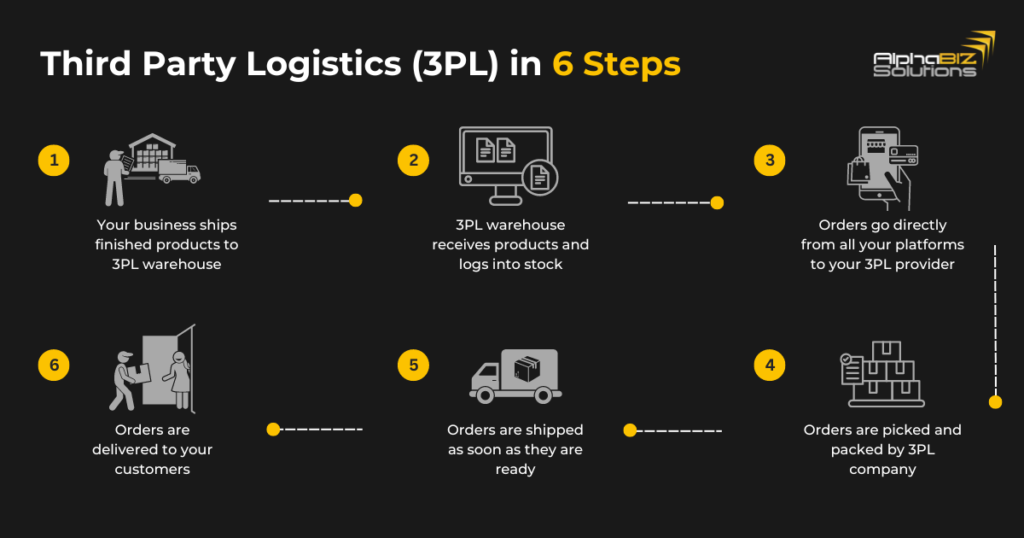
Implementing just-in-time inventory management can significantly reduce your handling and carrying costs. By ordering stock to arrive just as it’s needed, you limit the amount of inventory you need to hold at any given time. Additionally, partnering with third-party logistics (3PL) providers can help minimise your warehousing needs and associated costs.
MYOB Advanced allows integration with 3PL partners. Real-time communication and updates on sales and order status can be achieved, enabling a smooth and efficient inventory process. By outsourcing storage, picking, packing, and shipping, you can reduce the labor and capital tied up in stock, effectively lowering your handling and carrying costs.
8. Serial & Lot Tracking
![]()
Serial and lot tracking offer an effective solution to optimise stock management, streamlining data entry while minimising manual errors. This system provides quick access to essential information like product history, warranty status, and service records. It also simplifies the reconciliation of inventory counts by helping employees identify discrepancies, enhancing visibility into inventory, and reducing data reconciliation time. This level of efficiency significantly mitigates potential cost leakages.
Additionally, this system enables efficient recalls and returns, as specific items sold to customers are tracked, facilitating retrieval of problematic stock. Audits and inspections are streamlined through verification of the presence and accuracy of specific items. Moreover, faster product identification is achieved by pinpointing an item’s exact location, leading to time-saving and enhanced operational efficiency. Thus, serial and lot tracking proves to be a highly effective strategy in reducing potential cost leakage and saving valuable time.
9. Working out Landed Costs

A key strategy to reducing landed costs involves a comprehensive understanding of these costs. Landed costs encapsulate the total expense of a product once it has reached a buyer’s doorstep, including the product’s price, shipping, docking, quarantine, and any other fees. It’s particularly vital for businesses sourcing goods from overseas, ensuring accurate product pricing and safeguarding profits.

MYOB Advanced features a robust tool to help manage and calculate landed costs. This feature lets you account for all the extra costs of purchase, thereby calculating the true cost per unit. The system also lets you establish your own landed cost allocation method based on quantity, cost, volume, or weight. This flexibility offers precision in calculating landed costs tailored to your specific business scenario, empowering data-driven financial decisions.
Conclusion
Efficient inventory management is a cornerstone of a thriving business, where cost leakages can undermine profitability. By employing strategies discussed in this guide, you are proactively addressing potential cost leakages, thereby fortifying your bottom line.
With the right strategies and a dedicated insight-driven inventory management system like MYOB Advanced, you can turn inventory management into a competitive advantage. By doing so, you not only protect your business’s profitability but also create a platform for sustainable growth and success.
Elevate Your Inventory Cost Management with Alphabiz Solutions
When it comes to managing inventory costs, it’s easy to feel overwhelmed. But with MYOB Advanced, a powerful and easy-to-use cloud-based system, the path becomes clearer and the job becomes easier. This tool can help you cut down on costly mistakes and keep your inventory management running smoothly.
Don’t let opportunities for growth and savings slip by. Book a demo today with our ERP experts. See how improved inventory management can benefit your business. You can save money, work smarter, and achieve new heights.


